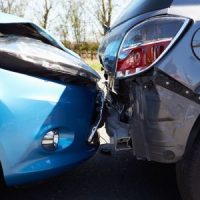What Does Your Car’s Event Data Recorder Do?

Wouldn’t it be handy if cars had something in them that recorded all of the car’s vital functions? Things like speed, or braking, or whether safety features in the car were used or deployed? Well, it turns out that there is such a device, although you as the driver don’t interact with it.
It’s called an electronic data recorder, or EDR, and it is very similar to black boxes inside of planes.
EDRs in Modern Vehicles
Almost all modern cars for the last ten years have had EDRs, though some track more data than others. The more cars technologically advance, the more that gets recorded, so the newer model EDRs will record more data and information. There are online databases that track which cars are made with EDRs in them, and which are not, if you aren’t certain.
EDRs aren’t legally required, and that means there is no standard as to what they record and don’t record. Generally they will record speed, when a brake pedal is being pressed, the direction of the steering wheel, or usages of turn signals. They can even tell if occupants of a vehicle were wearing their seat belts.
When They Record
Some EDRs are always recording, re-writing itself periodically unless a crash is sensed, in which case the data is preserved. Others will only kick in, when a collision is sensed. Many even assist as safety features, alerting remote rescue or emergency personnel that a crash has happened.
In some cases, power in a vehicle may be cut, before data can be recorded. When power is cut from a vehicle early in a crash, the airbags will deploy, but all other systems, such as the EDR, will be cut off.
EDRs cant be removed, at least, not be a professional. Doing so can damage the vehicle, and even harm you, as many are attached with the seat belt or the airbag (which is how the EDR knows if the car was in an accident).
Using an EDR in Trial
It is becoming more and more common in disputed liability car accident cases, to get the EDR, and have the data used as evidence in trial.
While evidence found on an EDR won’t conclusively show who is at fault for an accident, it can lead in that direction and information garnered from an EDR, can help accident deconstructionists piece together how an accident happened, or else, it can determine who may be right, when two drivers have differencing and conflicting recollections of how an accident happened.
Getting the data from an EDR is relatively easy but reading it is not. There is no universal language that EDRs use, so experts that read and interpret the data, need to understand how different manufactures code their EDRs.
We can help you get the evidence you need in your accident case. Call our Boston personal injury lawyers at The Law Office of Joseph Linnehan, Jr. today at 617-275-4200 for help and a free consultation.
Sources:
nhtsa.gov/research-data/event-data-recorder
crashdatagroup.com/pages/edr-explained
